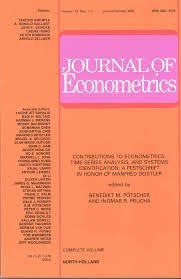
Mesters, G. and Koopman, S. (2014). Generalized Dynamic Panel Data Models with Random Effects for Cross-Section and Time Journal of Econometrics, 180(2):127--140.
-
Affiliated authorsSiem Jan Koopman, Geert Mesters
-
Publication year2014
-
JournalJournal of Econometrics
An exact maximum likelihood method is developed for the estimation of parameters in a nonlinear non-Gaussian dynamic panel data model with unobserved random individual-specific and time-varying effects. We propose an estimation procedure based on the importance sampling technique. In particular, a sequence of conditional importance densities is derived which integrates out all random effects from the joint distribution of endogenous variables. We disentangle the integration over both the cross-section and the time series dimensions. The estimation method facilitates the modeling of large panels in both dimensions. We evaluate the method in an extended Monte Carlo study for dynamic panel data models with observations from different non-Gaussian distributions. We finally present three empirical illustrations for (i) union choice of young males using a Binary panel, (ii) crime rates of families using a Binomial panel and (iii) economic growth modeling using a Student's t panel. {\textcopyright} 2014 Elsevier B.V. All rights reserved.